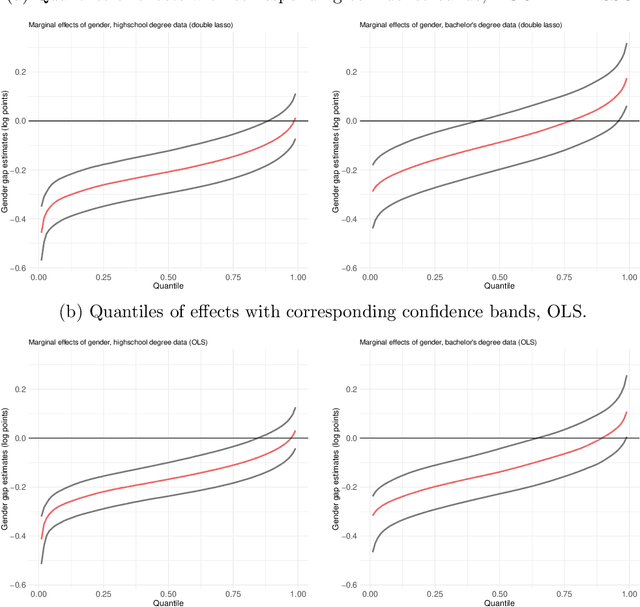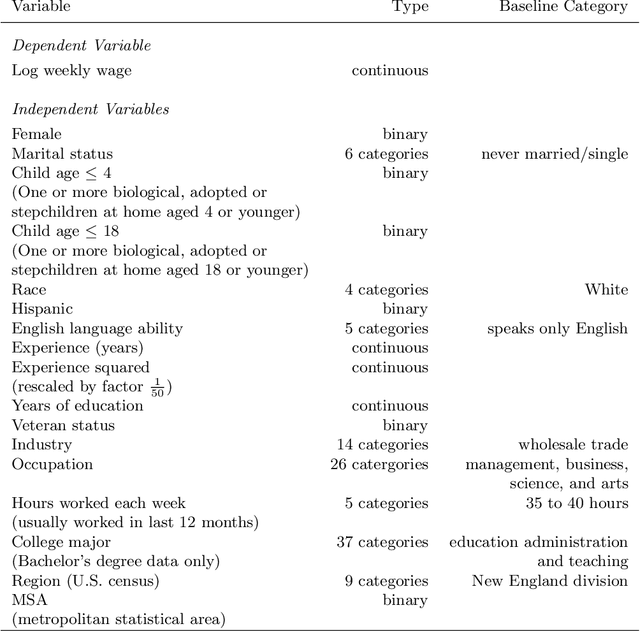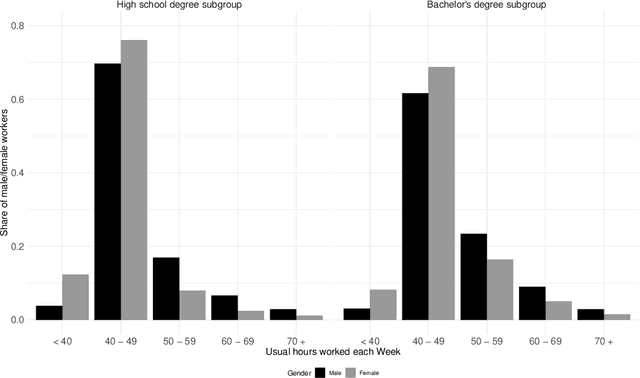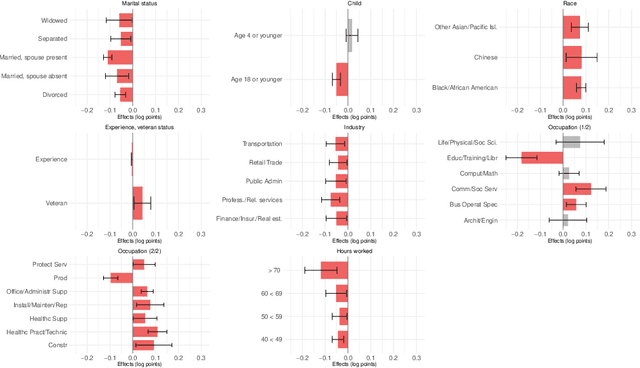Closing the U.S. gender wage gap requires understanding its heterogeneity
Paper and Code
Dec 11, 2018



In 2016, the majority of full-time employed women in the U.S. earned significantly less than comparable men. The extent to which women were affected by gender inequality in earnings, however, depended greatly on socio-economic characteristics, such as marital status or educational attainment. In this paper, we analyzed data from the 2016 American Community Survey using a high-dimensional wage regression and applying double lasso to quantify heterogeneity in the gender wage gap. We found that the gap varied substantially across women and was driven primarily by marital status, having children at home, race, occupation, industry, and educational attainment. We recommend that policy makers use these insights to design policies that will reduce discrimination and unequal pay more effectively.
 Add to Chrome
Add to Chrome Add to Firefox
Add to Firefox Add to Edge
Add to Edge